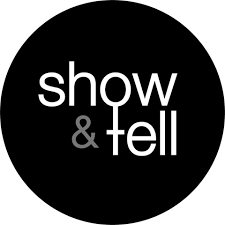Response to #1
In Relata Selecl’s TED Talk, I first noticed how honest she was. She would say phrases like, “I wasn’t sure what quote to share with you.” By being honest like this, Selecl makes her speech very relatable for the listeners. She also uses “we” and “us” a lot, which creates the same impact. Salecl also used many examples from personal experiences or her friend’s experiences. This way, many listeners can realize they have seen themselves in similar situations or have seen someone they know in these situations. By doing this, she created laughter. She also created laughter by the way she worded her points. For example, Selecl says, “She was so good at selling cars that then she sold airplanes.” Her friend did not sell airplanes, but it was a clever phrase used to engage the audience. Then, after this laughter, she got more serious about her point. Selecl went into an analysis of choices, then circled back to her own experience with a stranger. She started with a funny punchline that this person needed a sperm donor, which created laughter once again from the audience. However, again, she got more serious after with her tone and talked about how this woman has chosen bad men in her life and how these choices have been risk and stress-provoking. Selecl was very clever with her speeches structure; she creates almost a bond with the audience by using words like “us,” “we,” and presenting stories that most people in the audience could relate to. Using universal terms and ignorance, anxiety, stress, individual choice, and a “veil of obviousness.” A very successful tactic Selecl used was also bringing it back to herself and even asking herself questions. This creates more of a bond with the audience because it shows even the speaker still has questions and that people aren’t alone.
Response to #2
In Margaret Heffernan’s TED Talk, she started her speech with evidence. However, this may have blown over some people’s heads since it was an overview of an experience and ended up being evidence of “dealing with the unexpected.” When Heffernan talks of defying forecasting, she then says an example of this would be when the Bank of England says, “There might be another crash, but we don’t know why or when.” I noticed that some of her evidence did not have to be scientific or relate to a specific event. Heffernan mentions that we don’t know when or where there will be a forest fire, proving her point that we can’t rely on technology for it. Using examples like these where technology is not included in predicting things, Heffernan concludes her introduction by stating that efficiency actually stops us from adapting and responding as humans. This leads into the main section of her speech, asking if efficiency does not help us, what skills will? She gives an example of how we know there will be more epidemics in the future, but we don’t know when and where, but we can prepare. We can prepare with vaccines and safety measures. Heffernan explains that we won’t use them all with an abundance of vaccines, causing these actions to be inefficient. However, she states that this is robust because it creates more options. Heffernan’s “evidence” is hypothetical and does not rely on scientific or scholarly sources. However, I think this was intentional because her whole argument is about relying on ourselves to adapt and grow, not on efficient technology. By using human experiences as “evidence,” she supports her own argument. Heffernan also gives an example of banks, stating that now they hold more capital, being inefficient. However, it protects the system. She also uses climate change as an example, stating that they are forming multiple solutions, and uses the same approach towards trade wars. By dissecting all of this “evidence,” Heffernan’s point is that we can’t rely on something that is “efficient” because we can’t predict the future, we can’t predict outcomes, and it would be better to be “inefficient” and have multiple solutions and preparations for different scenarios. In her Netherlands nurses example, there was an experiment example where the nurses decided what to do with the different patients and how to treat them, causing them to get better in half the time. The nurses had no idea how easy it would be to create this solution since it was not something one could figure out by sitting at a desk, looking at a screen, or analyzing data. Since Heffernan used hypothetical evidence to start, this evidence example was placed perfectly in her speech to prove her point and prove that this type of inefficient thinking actually works. Heffernan did a great job at building a climax in her speech and presenting evidence in a way where the audience could engage by thinking critically about universal experiences with Heffernan’s presented mindset.


